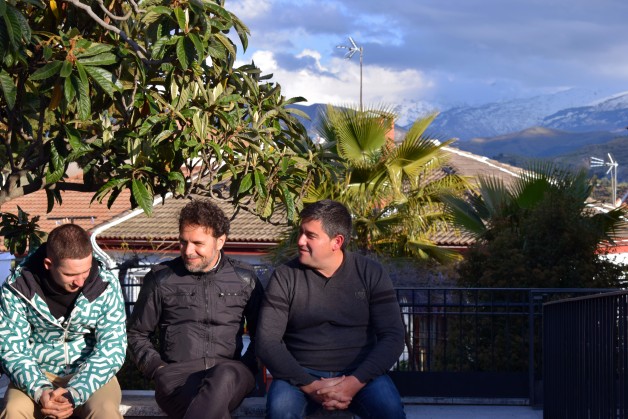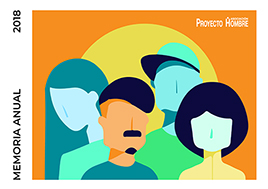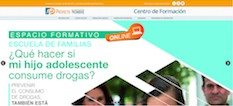24 septiembre, 2019
The Social Contagion of Hope
David Best
Professor of Criminology at Sheffield Hallam University & Honorary Professor of Regulation and Global Governance at The Australian National University
Some of you were drowning in pain, had lost everything but your life to addiction鈥攁nd recovery still did not come. When it finally arrived, it wasn鈥檛 forced on you and you didn鈥檛 initially choose it. You caught recovery in spite of yourself. And you caught it from other people in recovery (William White, 2010).
In 2010, Christakis and Fowler summarised the findings of their key public health text on social contagion in which they discussed the importance of flow of behaviours through social networks based on the principles of connection, contagion and homophily (the latter referring to the fact that connected people tend to share values and beliefs). For behaviours as diverse as smoking cessation, binge drinking, obesity, divorce and heart disease, Christakis and Fowler demonstrated the importance of social networks in the spread of a range of behaviours in ways that are predictable and can be mapped depending on the attractiveness of the behaviours and those who role model them.
In a similar vein, Braithwaite (forthcoming) has used the idea of ‘cascades’ to explain the spread of a complex group of behaviours including suicide, anti-social behaviour and war. He also discusses addiction recovery and cites the 12-step movement as having a social power akin to that outlined in the quote from William White that opens this paper.
What this paper will argue is that is that there are conditions that can support the contagion of recovery based on the attractiveness of the carriers and the message they transmit but also on the social conditions that allows them to be visible and to transmit efficiently and robustly.
CHIME and the mechanisms of recovery
In 2011, Leamy and colleagues published a meta-analysis of mental health recovery mechanisms, where they identified five key ingredients that made up the acronym CHIME. All effective recovery project and interventions had five common ingredients – they improved Connectedness; they generated Hope; they enabled individuals to develop more positive Identities; they supported the process of giving daily lives Meaning; and they Empowered the people engaged in the programmes. This translates incredibly well to the addiction recovery space and Best, Hall and Hamer (in press) have argued that it is the initial combination of connection to others in recovery that generates the hope that can create a positive cycle of meaningful activities (work, education and volunteering) that provokes a positive self-image and a sense of self-esteem and self-efficacy.
As argued in my book 芦The Social Contagion of Hope禄 (Best, 2019), recovery is a fundamentally social and societal phenomenon that relies on the accrual of ‘recovery capital’ (Granfield and Cloud, 1999). While we know that over a period of around five years (Dennis et al, 2007) individuals will develop sufficiently strong personal resources (resilience, coping skills, self-esteem and so), most will also rely on strong social networks and ability to access the resources available in their community. What groups (if any) they belong to and what opportunities there are to access community resources will determine the likelihood of them being touched by the contagion phenomenon and for them to be able to sustain and nurture such opportunities for change.

Community Connectors and peer champions
The Social Contagion book describes a number of case studies from Australia and the UK where hubs of visible and attractive champions have generated clear pathways to peer support in the form of Community Connectors (McKnight and Block, 2010). These community connectors provide social support and role modelling but also act as human bridges to community resources that can support recovery pathways. The common characteristics of the groups described are a vibrant sense of energy and commitment, strong bonds between group members (which Putnam (2000) would have referred to as bonding social capital) and positive and diverse connections to the resources available in the community (in the language of Putnam, this would be regarded as bridging social capital).
The groups were able to create and project a positive social identity onto new members while creating opportunities for social learning in structured, supportive and regulated environment. Peers played a critical role in this process with each group dominated by people in stable recovery who acted as role models, provided structure and with the experience and knowledge to guide and shape the groups and to manage the relationships with external organisations.
As we have argued in our Social Identity Model of Addiction Recovery (SIMOR; Best et al, 2016), positive recovery groups like this use a process of attraction and engagement to support individuals in moving away from using groups and moving into recovery groups, with the attendant changes in their values, beliefs, expectations and needs. Peers play a critical role in showing what is possible (Connection leading to Hope) and in creating pathways to Meaningful activities that can generate positive Identity changes and personal Empowerment, completing the set of CHIME requirements.
While professionals can also fulfil many parts of this role, and recovery is at heart a relational theory where human connection inspires and motivates change regardless of its source, there is something unique about the mentoring role of peers (the 12-step sponsor being but one example). They carry hope and inspiration but they also offer practical support, and many will go that extra mile, outside of office hours and be there when the crises occur to support and cajole and to cross boundaries into friendship that transcends (and would transgress) professional boundaries.
Positive recovery groups like this use a process of attraction and engagement to support individuals in moving away from using groups and moving into recovery groups, with the attendant changes in their values, beliefs, expectations and needs
Conclusions and a tentative model about contagion
Obviously, this characterisation applies only to the best peer mentors and guides and this paper will conclude with some preliminary ideas about how contagion works in practice. And this will allow us to look at speculate about some of the determinants of whether and with what speed and effectiveness contagion will take place, generating recovery ‘epidemics’ in populations.
So the first suggestion is around the stability and attractiveness of the recovery role models – can they attract and engage people through the fog of chaos of substance addiction to such an extent that they can provide inspiration and Hope that recovery is realistic
But to do this there must be the Connection. This requires visibility and viable pathways for the general public as well as through treatment services. In specialist treatment services, workers must champion recovery and believe in the capacity of the recovery groups and communities to make that initial connection. For those who are in trouble, or who are the loved ones of those in trouble, there must be access to recovery.
So the first issues are around capacity to generate Hope and ability to Connect. These are characteristics of the group. However, there are also structural factors that will influence engagement – funding and support for recovery groups and communities, and broader macro-economic factors that shape community cohesion and community wellbeing.
There are a second set of structural factors that relate to the peer connectors capacity to make connections in the community. In a crude sense they can be characterised as jobs and houses, but the capacity for bridging capital is not only about what is out there but about the willingness of communities that have to allow access to groups that do not. This is not only a question of social inequity and exclusion, but one of social justice.
While these are the candidate characteristics to explain the effectiveness and speed of the social contagion of recovery, there is a positive footnote that challenges structural exclusions and neo-liberal inequities. In our paper on recovery as a pre-figurative political movement, Beckwith, Bliuc and Best (2013) argued that recovery has an emergent property as a collective identity of hope in the form of ‘the recovery movement’. The recovery movement has emerged in the form of recovery walks, recovery games, recovery cafes and events that create a collective sense of belonging and pride. The recovery movement is not immune to structural insulators preventing contagion, but the sense of collective efficacy they generate can help to overcome some of those structural barriers. For this reason, peer-based models may be primarily ‘grass roots’ but their collective impact can be much more profound.
References
Beckwith, M., Best,D. & Bliuc, A. (2016) What the recovery movement tells us about pre-figurative politics, Journal of Social and Political Psychology, 4(1), 238-251.
Best, D., Beckwith, M., Haslam, C., Haslam, A., Jetten, J., Mawson, E. & Lubman, D. (2016) Overcoming alcohol and other drug addiction as a process of social identity transition: The Social Identity Model of Recovery (SIMOR), Addiction Research and Theory, 24 (2), 111-123.
Best, D. (2019) Pathways to recovery and desistance: The role of the social contagion of hope. Bristol: Policy Press.
Best, D., Hamer, R. and Hall, L. (2019) An integrated model of change – desistance and recovery. In; Best, D. & Colman, C. (eds) Desistance and recovery. Routledge: Abingdon, Oxon.
Christakis, N. & Fowler, J. (2010) Connected: The surprising power of our social networks and how they shape our lives. Little, Brown and Co: New York.
Granfield, R. and Cloud, W. 1999. Coming clean: Overcoming addiction without treatment, New York: New York University Press.
McKnight, J. & Block, P. (2010) Abundant communities: Awakening the power of families and communities. Berrett-Koehler.
Putnam R. (2000) Bowling Alone: The Collapse and Revival of American Community. New York: Simon & Schuster.
White, W. (2010) Recovery is contagious, williamwhitepapers.com (accessed 20.2.19)
聽
 English Version
English Version




Dejar un comentario